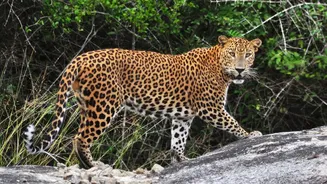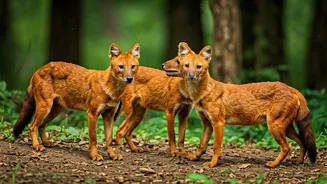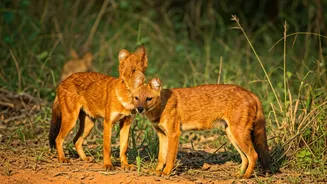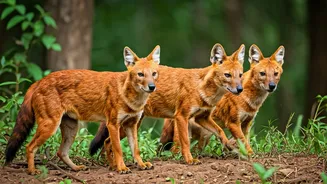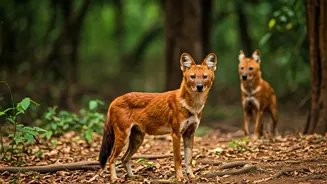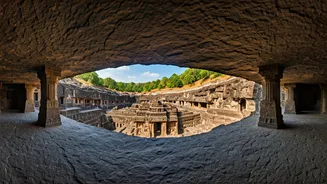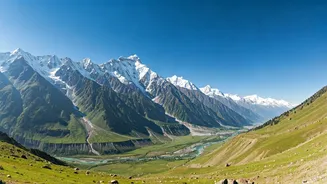Dhole: India's Wild Dog
The wild dog, scientifically named Cuon alpinus, is also known as the Asiatic wild dog, red dog, or dhole. They are known for their social nature, living
in packs that can include up to 40 individuals. These canines are recognized by their reddish-brown coats and bushy tails. Once found all over Asia, their populations have significantly decreased. The dhole faces threats like habitat loss and fragmentation, the decline of prey species, competition with other predators, and disease transmission from domestic dogs. Conservation efforts are crucial to protect this unique animal. Learning about dholes helps promote wildlife conservation and awareness.
Bandipur National Park
Bandipur National Park, located in Karnataka, is an ideal destination for observing dholes. With an area encompassing various ecosystems, from deciduous forests to scrublands, this park offers a habitat that's favorable to the survival of the dhole. The park is part of the Nilgiri Biosphere Reserve, providing a vast expanse for dholes to roam. The successful conservation efforts in Bandipur have resulted in a significant increase in the wildlife population, creating opportunities for wildlife viewing, including the elusive dhole. Plan your visit during the drier months for enhanced visibility, and always follow park guidelines to ensure the protection of the animals and their habitats. Bandipur's commitment to conservation makes it a model for other parks.
Kanha National Park
Kanha National Park in Madhya Pradesh, offers another sanctuary for dholes. This park is renowned for its diverse wildlife and conservation success. The habitat in Kanha, comprising Sal forests and grasslands, provides ample hunting grounds for these canines. The park has a substantial population of prey species, which helps to support the dhole population. Kanha's dedication to wildlife protection is evident through well-managed patrols and habitat conservation programs. The park provides an exceptional opportunity to view dholes, and offers valuable insights into the challenges and triumphs of wildlife conservation in India. Wildlife enthusiasts can enjoy the park's scenic beauty and the thrill of spotting dholes.
Tadoba National Park
Tadoba National Park in Maharashtra is also a prime location to spot dholes, offering a different habitat within the diverse Indian landscape. Tadoba's dry deciduous forests and the presence of water bodies support a rich biodiversity, making it a suitable environment for dholes. The park's success in protecting wildlife also benefits the dhole population, allowing for its survival and growth. Regular patrols and protection measures contribute to maintaining a safe environment for the animals, and also allow for enhanced visibility for visitors. Visiting Tadoba offers a unique experience, allowing one to explore the natural habitat and appreciate India's wildlife. Strict adherence to park guidelines is encouraged to support conservation efforts.
Pench National Park
Pench National Park, located in both Madhya Pradesh and Maharashtra, is another important location for observing dholes. The Pench river flows through the park and is responsible for the diverse ecological systems, including both moist and dry deciduous forests. These forests provide ideal habitats and hunting grounds. Conservation initiatives in Pench have contributed to the protection of the park's wildlife, including the dhole. The park's management focuses on balancing wildlife protection with the needs of local communities, which contributes to its long-term conservation success. Visiting Pench provides an opportunity to observe dholes in the diverse and thriving environment, demonstrating the successful conservation efforts in the park. Wildlife viewing and adherence to conservation policies are essential.


